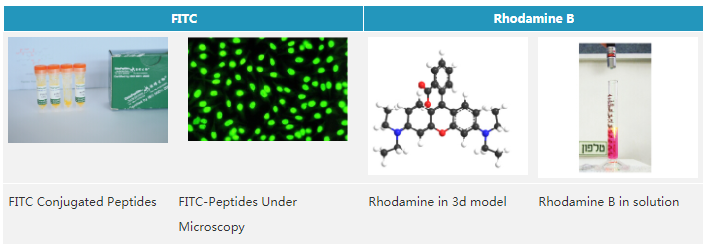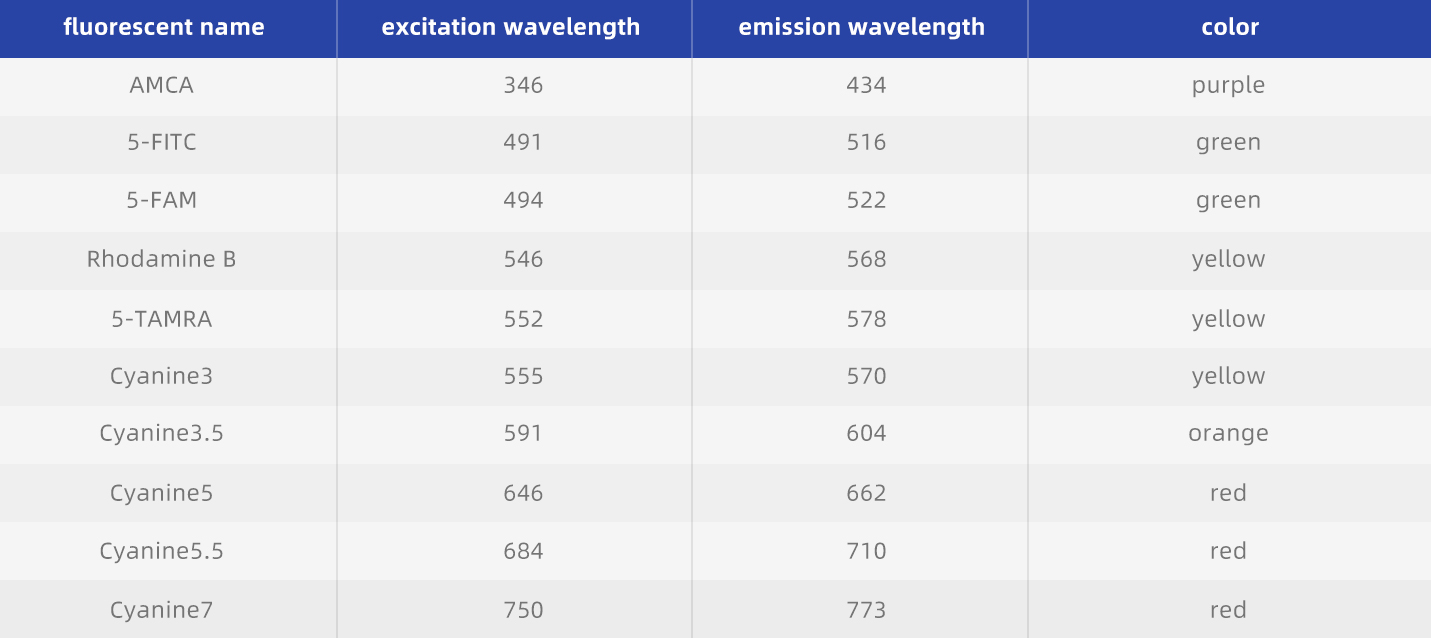Fluorescent label of polypeptide
Fluorescent labeled substances are also widely used in protein function research and drug screening. Fluorescent-labeled peptides have been used to detect the activity of target proteins, and the high-throughput screening methods developed by them have been applied to drug screening and drug development of proteins targeted for disease therapy (e.g., various kinases, phosphatases, peptidases, etc.). Therefore, the fluorescence modification of peptides is also an important part of the field of peptide synthesis.

The fluorescent labeling method of polypeptide is related to the structure of the fluorescent reagent, which is usually labeled on the N-terminus or lysine side chain of the peptide. For fluorescence with free carboxyl group, HBTU/HOBt/DIEA method was used in the same way as polypeptide reaction. FITC(Fluorescin isothiocyanate) is a commonly used fluorescent marker for polypeptides and antibody proteins. When they are linked to α-amino group at the n-terminal, Edman degradation will occur in TFA. To avoid this side reaction, we need to add a linker, such as 2-amino acetic acid, to the n-terminal labeling. 3-amino-propionic acid, 6-amino-caproic acid, etc.

Fluorescent markers available:
5-FITC, 5-Fam, Rhodamine B, CY Series (CY3/3.5/5/5.5/7-COOH,
CY3/3.5/5/5.5/7-Mal, sulfo-CY3/5/5.5/7-Mal), ICG Series (ICG-COOH, ICG-MAL, sulfo-ICG-Mal), IRDye800, Super Fluor series (the same effect as Alexa Fluor series) and so on.
Fluorescent dyes and excitation and emission wavelengths are commonly used



 Contact Us
Contact Us
 Return
Return